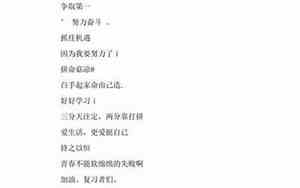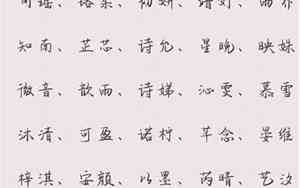
在中文中提到"一个好名字",通常指的是一种美好的称谓,寓意深远或者富有文化内涵,它不仅仅是个人身份的标签,更是人们对美好品质和期望的寄托。例如"张明志","明"意味着光明,"志"则代表决心,组合起来象征有决心和光明未来。
In English, a "good name" refers to a significant and meaningful moniker, often carrying symbolic significance or cultural depth. It goes beyond simply identifying a person; it embodies qualities and aspirations. For instance, "John Pinnacle" - "John" is a common name, while "Pinnacle" suggests peak achievement or a towering presence. A good name in English is chosen with the intention to evoke positive connotations and embody the values desired for the individual.
此处省略十个字下一句
如果您想继续这个句子,但只有十个字,那我们可以这样补充:
有时,这十个字就足以传达深远的信息,如"精诚团结,共创辉煌",短短十个字,却蕴含着团结合作与追求卓越的精神。
In other cases, just ten words can pack a powerful message, such as "Sincere unity, striving for greatness," where simplicity carries weight and speaks volumes about collaboration and ambitions.
此处省略n个字什么意思
"此处省略n个字"通常表示文本中有一个或多个字被有意留空,可能是为了保持简洁,避免冗长,或者是需要进一步说明的内容。"n"在这里是不确定的数字,具体数量取决于上下文。例如,如果n是10,就可能指省略了10个字的句子或表达;如果是5,可能是五个字的内容未写。
In the phrase "omitted n words here," it generally implies that a certain number of words have been intentionally left out, often for the sake of brevity, clarity, or to provide room for elaboration, with "n" being a placeholder for an exact number, which could vary based on the context. If n equals 10, it means 10 words are missing; if n is 5, it's five words.
此处省略几个字的说说
"此处省略几个字的说说"通常表示一段话或一条信息中,由于某种原因,某些内容被省去了,可能是因为句子较长,需要简化,或者内容敏感,故意保留。具体的字数要看实际情况,可能是几个字,也可能更多。
For example, "It's a brief utterance, with several words left unsaid, perhaps to convey a complex thought concisely or to maintain discretion." Without specifying 'n', it could range from a handful of words to a more substantial portion of the original statement. The exact number of words missing would depend on the situation described.
此处省略好多字怎么接下句
如果"此处省略好多字"接下句,通常需要根据省略的内容进行合理的推测。但一般来说,可以这样接:
"虽然具体内容有待详述,但显然这部分强调了… 或者,我们或许可以从剩下的信息中推断出…"
"The specifics are somewhat omitted, but it's clear that this focuses on… Alternatively, we can infer from what remains that…"
具体情况需要根据上下文来补全,以便保持连贯性和完整性。如果需要进一步的接续,需要知道省略的具体内容或者上下文环境。









